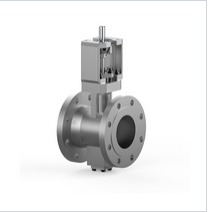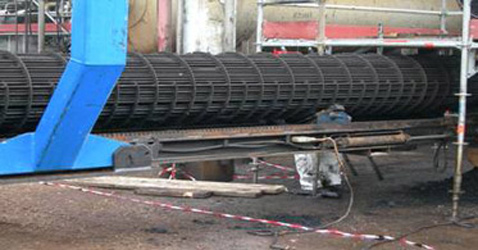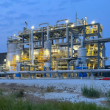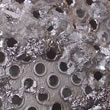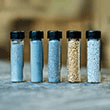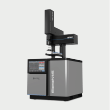Question
-
In the DHDS unit, the amine scrubber is having a foaming issue. Antifoam dosing was not yet commissioned from almost 20 years but suddenly foaming problems have started. Antifoam helps to control the problem but continuous dosing is also not suggested. What may be the reasons when we are maintaining other parameters and proper Delta T between amine and process gas and how can we encounter this issue?
Jul-2021
Answers
-
Mustafa DAOUD, PALL, musta05@gmail.com
As highlighted, solids and hydrocarbon liquids contaminants require monitoring and good handling when in excess. A quick mechanical solution is a temporary filtration solution of the amine solvent with an absolute rated variating gradient filtration approach. It helps to recover a healthier and more active amine and reduce the foaming incidents fast.
Sep-2021
-
Nagarathinam S Murthy, McKinsey & Company, Chennai, nssvdvr@gmail.com
Most amine tower related problems are due to quality of amine being recirculated. Simply check on amine quality for pH, Strength and TSS which can be done by almost all refiners. If MDEA is used as amine, the pH of circulating amine shall be well above 9.8; the free amine strength should be close to 35% wt and TSS shall be less than 50ppm. Also, one can check the colour of amine which is to be ideally water white. Excessive presence of hydrocarbons in circulating amine can be verified by another field test viz. foaming tendency. If all fine at amine end, check interphase level in DHDS to prevent C5s + in sour gas being treated in amine tower. Good luck...
Aug-2021
-
HIMANSHU SHARMA, EIL, himanshutrikha@gmail.com
Foaming is a typical indication of presence of a third phase other than Vapour and amine, this can be Hydrocarbon or fine solids which promote foaming.
In absence of a Proper flow scheme of the unit, I would suggest checking classical measures.
1. Analyze any recent change in feed quality or throughput.
2. Lower down Separator's operating level.
3. Check difference between Amine and Gas and ensure a large swing is not observed.
4. Monitor quality of lean Amine in the unit for HC presence.
I would not agree with Amine absorber operation as not required since this is a recycle loop wherein H2S will eventually build up. In case there is no amine absorbed the unit needs to purge a portion of recycle gas which is Hydrogen loss.
Aug-2021
-
Jake Gotham, InSite Technical Services, jake.gotham@insitetechnical.com
There are plenty of good references on the subject of amine system troubleshooting so I won’t try to reproduce them here, but I will make two points:
1. In many sites, the amine is common to several process units, or perhaps the whole refinery. In this case, if efforts to troubleshoot the problem within the DHDS are unsuccessful, the troubleshooting exercise needs to consider the amine network as a whole. The cause of foaming in one unit might be found in a different process unit. E.g. a corrosion problem in the FCC scrubber puts suspended solids in the amine which are carried around the site. If the conditions in the DHDS scrubber (velocities etc) are less favourable than the FCC scrubber, the problem could appear there first.
2. If the scrubber you refer to is in the recycle gas, it may be the case that it is of little value. Recycle gas scrubbers were very common at one point, but advances in catalyst technology mean they are not installed in many modern diesel hydrotreaters unless the feed is particularly sour.
- Usually the recycle gas scrubber has a bypass which can be used to respond to a foaming incident. It can also be left partially open to reduce vapour velocity through the scrubber in normal operation (it is also preferable from a corrosion perspective to keep flow through this line rather than it becoming a stagnant dead-leg). I am also aware of units that have stopped the amine flow to the recycle gas scrubber altogether for other reasons.
- Troubleshooting the amine problem itself is definitely important, but if the problem is difficult to remedy, opening the bypass might be worth considering to buy time to fix the problem.
- Speak to your catalyst supplier for advice on the impact of this on the performance of the unit. Your management of change will also need to assess the impact on corrosion rates as the system becomes sourer.
- If the scrubber you are referring to is the low-pressure off-gas scrubber, bypassing it is unlikely to be feasible unless the downstream system is able to accept sour gas without creating an environmental issue.
Good luck with your troubleshooting exercise.
Jul-2021
-
Toine Dikmans, MPR Services, toine.dikmans@mprservices.com
Foaming issues can have different causers. In many cases the causer is entrained Hydrocarbons. This will give foaming instantly. In combination with solids (suspended solids) the foam will have a long retention time as well. Good to hear that you are not constantly dosing anti-foam (or non at the moment). Anti-foam is only for emergency upsets. At the end the anti-foam will cause foam again as well. Have you checked if there are any signs of corrosion? Heat Stable Salts in your amine will behave a chelators and will start eating up passivation layer/equipment. This will result into having solids in your solution that will cause foaming.
Jul-2021









